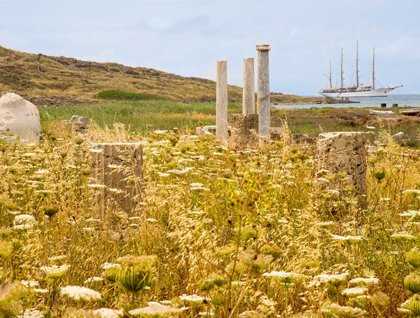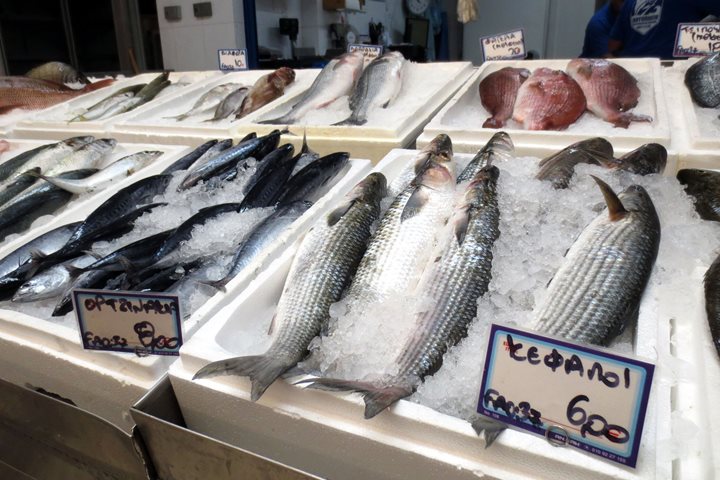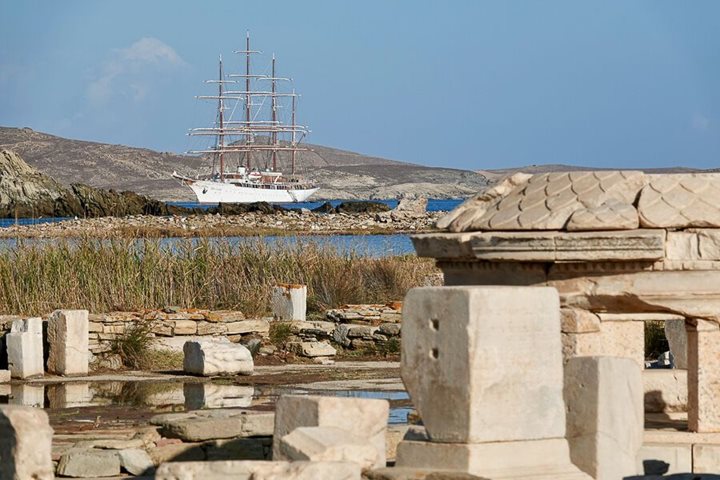It was only a short way this morning from Naxos, where we spent the night at anchor, to the sacred island of Delos. Arriving early, we had the place virtually to ourselves—a special treat. Our historian, the always-illuminating Robyn Woodward, had given us some very helpful context the day before, which lent further meaning to the many things our guides, Effie and Gemma, showed us this morning.
Delos was the birthplace of the twin gods Artemis and Apollo, born to Leto after Zeus carried on one of his many affairs, much to the displeasure of his wife, Hera. Hera had ordered every island to reject Leto, so that she wouldn’t have a place to give birth. But Poseidon, wanting to help his brother Zeus, caused Delos to rise from the sea—the name Delos means “something that can be seen.” Delos lies at the heart of the Cyclades Islands, both geographically and spiritually.
From its beginnings as a sacred precinct and pilgrimage site, Delos also grew to become a commercial center of great importance. Looking at this semi-arid island from a short distance away, it’s hard to imagine how 30,000 people could have lived here at its peak, but the hows and whys became more apparent as we toured the site, seeing the ingenious water delivery and drainage systems and the remains of the impressive homes, a few with mosaic floors still in place.
We also saw the remains of the south portico and its stoas; the renowned Terrace of the Lions (put there to protect the Sacred Lake and to awe visitors); the theater, where 6,000 people once gathered to enjoy music and plays; and the very fine on-site museum, which houses statues and mosaics that have been brought in from the elements.
The weather gods cooperated too, as the uncharacteristic steady drizzle of the early morning gave way to sunshine. Making our way back to Sea Cloud, we carried on with our voyage, setting the sails in a good 20-knot wind as we headed southwards. In preparation for our visit tomorrow to Santorini, Robyn told us all about the legend of Atlantis and Minoan art and civilization during an afternoon talk.
And because we’re all insatiably curious about our remarkable ship, Sea Cloud, Tom O’Brien gave a talk about her long and rich history. That was followed by an “open house” tour of some of her original cabins.







